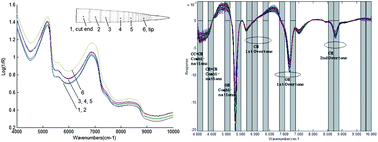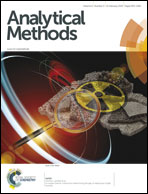Nondestructive determination of bamboo shoots lignification using FT-NIR with efficient variables selection algorithms
Abstract
To achieve the rapid and nondestructive determination of bamboo shoots lignification associated with crude fiber content and firmness, Fourier transform near infrared (FT-NIR) spectroscopy technique was used in this paper. The identification of efficient spectral variables selection algorithms: backward interval PLS (Bi-PLS), Monte Carlo uninformative variables elimination method (MC-UVE), competitive adaptive reweighted sampling (CARS) and genetic algorithms (GA) were also discussed. The partial least squares (PLS) algorithm was applied to establish prediction models for crude fiber content and firmness after spectral preprocessing and variables selection. The correlation coefficient (R) and root mean square error of prediction (RMSEP) were used to assess predictive effects of PLS models. Modeling results showed that the CARS-GA-PLS model was prime for crude fiber content prediction (R = 0.9508, RMSEP = 0.0598), and the CARS-PLS model was superior for firmness prediction (R = 0.9681, RMSEP = 0.8003). The overall results sufficiently demonstrated that the FT-NIR spectroscopy technique could determine successfully crude fiber content and firmness of postharvest bamboo shoots.


 Please wait while we load your content...
Please wait while we load your content...